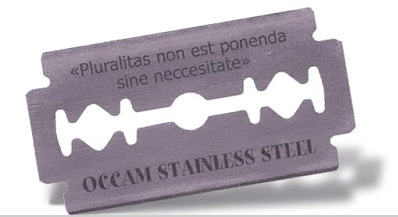Questions about How to File a Patent? We Have Answers.
By Mark R. Northrup (IEC Electronics) and Brian B. Shaw (Harter, Secrest & Emery, LLP)

Mark Northrup
Are you innovative, entrepreneurial, or a just a productive person with too many ideas? Eventually, we are likely to find ourselves confronted with the age-old questions, How do I protect my intellectual property (IP)? How do I patent my ideas? How do I copyright my works or protect my trademarks, such as a design or logo? If you’re concerned about someone or some competitor copying your idea and seeking a patent before you do, always play it safe and invest in a patent lawyer. Let’s look at a simple outline of questions to answer before pursuing the patent process in the US.
What do you want to patent?
Most people make the mistake of working endlessly trying to invent a “Unicorn” meanwhile trying to be the only ones who have this unique idea! The end game for them is a “get-rich-quick-scheme.” They want to get rich overnight. Let’s just start with a warning here and now. It’s imperative for you to understand that patents alone won’t make you rich. Nikola Tesla (July 10, 1856 to January 7, 1943) was an engineer known for designing the alternating-current (AC) electric system, which is still the predominant electrical system used across the world today. He also created the “Tesla coil,” which is still used in radio technology. He died dirt poor and alone, despite being very smart and holding world-changing patents in his name. Ultimately, the best patent in the world is merely expensive wallpaper, if the protected product has no commercial value. Hence, it is possible a patent may not serve you well, but it should be evaluated as the first step toward getting your idea or design protected.

Brian B. Shaw
Is your idea or design patentable?
There are three types of patents:
- Utility Patent: Protects a new and useful process, machine, manufacture, or composition of matter, or any new and useful improvement thereof.
- Design Patent: Protects the ornamental appearance, or how a device or object looks.
- Plant Patent: Protects an asexually reproduced, distinct and new variety of plant, other than a tuber propagated plant or a plant found in an uncultivated state.
Which one of these does your idea or design fall under? Typically, inventors with a brand-new idea or device will select a utility patent. While the Patent Statute sets forth numerous requirements for obtaining a utility patent, three of the main requirements include:
- Eligible Subject Matter: The idea must be within one of (i) a process, (ii) a machine, (iii) a manufacture, (iv) a composition of matter, or (v) any new and useful improvement thereof. While these are broad categories of eligibility, there are exceptions such as “the laws of nature” or “physical phenomenon” which cannot be patented.
- Novel: The idea needs to be new. That is, the idea must not have been otherwise publicly available before you get your application filed in the patent office.
- Non-Obvious: Even if the idea is within the eligible subject matter and is new, the idea must also be non-obvious in view of the prior art. Though this is an objective standard, it is often a point requiring substantial argument to the patent office. There are a lot of factors in play here, so if you feel you came up with the idea first, it’s a good idea to reach out to a patent lawyer and make your case.
Next step is a sketch, prototype, or fully document your new idea or design
The most basic step, yet the most complex one, is having to “describe your invention, idea, or design.” Harter Secrest & Emery LLP (HSE) provides inventors with a checklist to assist in this process. The checklist will help develop a very thorough description of how the device works as well as a drawing. These drawings are usually three views: X, Y, and Z. If your idea or design is more of a non-physical idea, and then you must document the logical flow or the concept in a concrete manner. It doesn’t have to be overly complicated. Remember, this is not your patent application. It’s your first step in that direction by fully documenting your idea or design on paper and getting witnesses (e.g., patent attorney) who will support you when you claim that it was your original idea or design.
Do you need a patent lawyer?
The United States Patent and Trademark Office (USPTO) does not require you to hire an attorney, thus you can file for a patent yourself. A patent examiner will provide some guidance in the process but does not draft solutions. Our recommendation is that you invest in a lawyer (e.g., HSE) in order to protect your idea or design. Here are some ways a patent attorney can help.
Are you worried your idea or design does not meet the thresholds for patentability? The patent attorney can assist because they have a thorough understanding of patent rules and laws and experience with the process.
If you filed the application on your own and are now in discussions with the patent office and you feel like they’re giving you an unusually difficult time, a patent attorney can help you move things in a way the USPTO expects. For example, the patent examiner may initially reject your claim. It may be that the patent examiner underestimates your knowledge or does not understand your invention, so having a patent attorney can help your case and give you more momentum.
The way you phrase your patent claim will be used by the court to determine if there is an infringement of your patent and your entitlement to damages. If the chances of this are high, then you should have a lawyer help you write a claim that covers your invention.
Patent attorneys can review a secure patent search (via professional patent researchers) to assess the patentability of the idea – prior to investing the time and expense of preparing and filing a patent application.
Did the lawyers you hired perform a thorough yet secure patent search?
Though not a legal requirement, a search to assess whether your idea or design already exists and that nobody else has already invented your idea or design is a worthwhile step. Also, we want to search for the most relevant patents relative to your idea. Your patent application will need to include a listing of these prior patents and a description supporting the distinctions from the prior patents. This assists your patent examiner in understanding the patentability of your idea. You can perform your patent search on-line. Google Patents, Patentscope, and traditional Resource Centers are just a few examples available. If you live near a USPTO resource center, feel free to visit and start here. The staff available can help you use the search tools. We recommend this before utilizing a patent attorney (e.g., HSE).
Should you apply for a provisional patent application (PPA)?
What does “provisional patent application” mean? First, there is only one kind of application that can become a utility patent: non-provisional. The “provisional” patent application lets you be the “first to file” under USPTO rules. Basically, if you and other people are competing to design a new product, by being the first to file the provisional patent application, you’ve blocked anyone else from obtaining a patent for that idea, for up to 12 months. Products that say “Patent Pending” reflect that the company only submitted a patent application – which can be a provisional patent application or a non-provisional patent application. The early patent filing also lets you start capitalizing on the marketplace long before the patent process plays out. But be very careful you don’t lock yourself into specific design constraints that later jeopardize your ability to protect the broader idea if your specific design change slightly. Refer to the USPTO website as a guide to “provisional patent” procedure. Once you submit this application to the USPTO, you have the right to use “Patent Pending” on your invention during the one-year pendency of the provisional patent application.
Develop a working prototype
Ok, now that you have a provisional patent application in place, it’s time to develop a working prototype. While not a legal requirement of the patent process, developing a prototype has substantial benefits. The prototype should be tested by real users so that you can refine the idea or design and end up with functional example. Remember, once you have the provisional patent application filed, you have 12 months to prepare for filing your non-provisional patent application. During this time, experiment with and perfect your prototype, find financial investors and sponsors, conduct thorough market and sales research to determine market potential, and search for companies that may be interested in licensing deals.
Note – file for your non-provisional patent within the 12-month window, because no extensions are allowed.
Final Patent Application Checklist
Has your patent attorney done all of his or her homework? According to the USPTO, every patent application must include the following:
- A transmittal form or letter: This identifies the claims, specification and drawings of your invention.
- All applicable fees.
- The application data sheet: This provides inventor and applicant information.
- Specification: This includes (A) title of the invention; (B) cross-reference to related applications; (C) statement regarding federally sponsored research or development; (D) the names of the parties to a joint research agreement; (E) reference to a “Sequence Listing,” a table, or a computer program listing appendix submitted on compact disc and an incorporation-by-reference of the material on the compact disc; (F) statement regarding prior disclosures by an inventor or joint inventor; (G) background of the invention; (1) field of the invention and (2) description of related art including information disclosed under 37 CFR 1.97 and 37 CFR 1.98; (H) brief summary of the invention; (I) brief description of the several views of the drawing; (J) detailed description of the invention; (K) claim(s); (L) abstract of the disclosure; and (M) Sequence Listing, if on paper.
- Drawings (if required): These will be very detailed illustrations of your invention, in three dimensions.
- A Declaration or Oath: There are forms available in the application filing guide for this so you don’t have to start from scratch.
Examination by USPTO patent examiner
The patent examiner considers the application for compliance with all the requirements of the Patent Statue and particularly the three criteria set forth above. Very often, the patent application is initially rejected and a “negotiation” process begins between the patent office and the inventor (or their attorney) as to what may be eligible subject matter, new or non-obvious. Once the patent examiner agrees there is allowable subject matter and the issue fee is paid, the patent office will grant the patent.
Receiving a patent
Once the patent is issued, the patent is automatically presumed valid. The patent owner then monitors the relevant industry and/or competitors to identify potential infringers – and the process of enforcement begins.
Patent Mentor – Good Practice for Thought
Once you receive your first patent, thank all of those involved (e.g., patent attorney, co-inventors, administrators, your company, etc.). Be sure to mentor future inventors who have not gone through the patent application process and recognize your company. Each time you go through it, you’ll learn new things, and talking as well as helping others is beneficial and can save a lot of time and trouble. Filing patent applications and receiving protection from the US government for intellectual property has been ongoing since the late 1700’s. Let us know your thoughts if you ever filed a patent with the USPTO. Did somebody help you (e.g., patent attorney)? What advice do you have?
Mark Northrup can be contacted at Mnorthrup@IEC-Electronics.com
Brian Shaw can be contacted at BShaw@hselaw.com.













